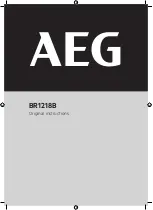
Recharging Ni-Cd or Ni-MH Batteries through 6V DC jack
Warning:
•
Do not attempt to charge alkaline batteries. Non-rechargeable batteries can get hot or
explode if you try to recharge them.
The radio’s DC 6V jack is for charging Ni-Cd or Ni-MH batteries and powering the radio.
You can recharge Ni-Cd or Ni-MH batteries inside the radio at home or vehicle, using a 6V,
600mA AC or DC adapter and a size F Adaptaplug
T M
connector.
Cautions:
•
You must use a Class 2 power source that supplies regulated 6V DC (Not more than 6V)
and delivers at least 600mA. Its center tip must be set to positive and its plug must fit
the radio’s DC 6V jack. Using an adapter that does not meet these specifications could
damage the radio or the adapter.
•
Always connect the adapter to the radio before you connect it to an external power
source (such as an AC outlet or a vehicle cigarette-lighter socket). When you finish,
disconnect the adapter from the power source before you disconnect it from the radio.
1. Rotate
VOL/OFF
fully counterclockwise to turn off the radio.
2. Pull down the latch on the battery compartment cover and remove the cover.
3. Set CHARGE
ON/OFF
to
ON
.
4. Place four Ni-Cd or Ni-MH batteries in the compartment according to the polarity symbols (+
and -) marked inside. Then replace the cover and push the latch up until it clicks.
5. Attach the Adaptaplug to the adapter so TIP reads positive (+).
6. Connect the Adaptaplug’s other end to the radio’s DC 6V jack and plug the adapter into a
standard AC outlet or vehicle’s power source.
Note:
•
Complete charging takes about 10 hours. When charging is complete, unplug the AC
or DC adapter from the power source, then disconnect it from the radio’s DC 6V jack.
•
Ni-MH batteries take longer to charge than Ni-Cd batteries.
Recharging Ni-CD or Ni-MH batteries through slow-charger
1. Power up the slow-charger.
2. Place four Ni-CD or Ni-MH batteries in the compartment according to the polarity symbols (+
and -) marked inside, then replace the cover and push the latch up until it clicks.
3. Place the radio into the slow-charger.
Note:
•
Complete charging takes about 10 hours. When charging is complete, remove the
radio from the slow-charger.
Important:
The EPA certified RBRC® Battery Recycling Seal on the nickel-cadmium (Ni-Cd)
battery indicates RadioShack is voluntarily participating in an industry program to collect and































